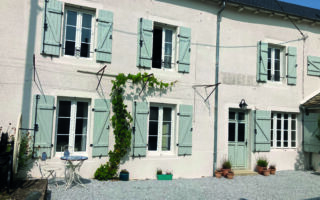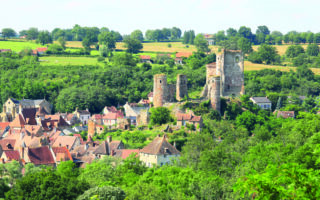A Stonemason’s Assistant for a Week: Renovation in France
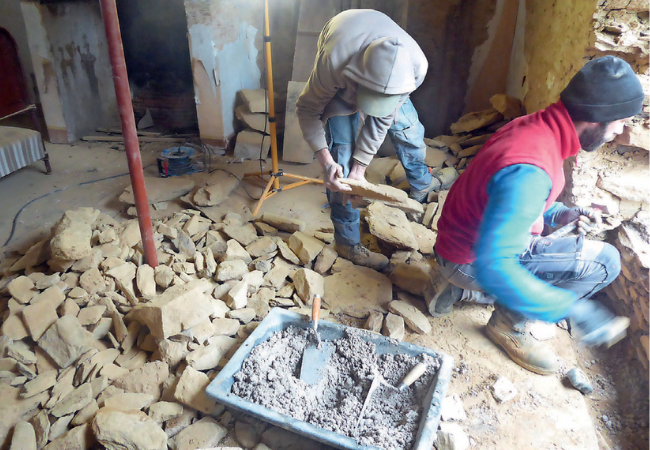
When stonemasons came to work on Andrea Kirkby’s home in Corrèze, she leapt at the chance to be their apprentice for a week
Just tap it with the hammer,” Dominique said. “On the side.” I didn’t hold out much hope, but I bashed the lump of rock I was holding against my leg. One, two – and sure enough the rock split neatly in two along the middle.
“See,” he said. “The stone here is just lovely to work with. But you go just 40km up the road and it’s horrible. Hard, doesn’t split, you have to take an angle grinder to it.”
I had asked the team working on my house in Corrèze if they minded letting me be an apprentice for a week. I got back a very elegantly worded invitation to join them and learn the mysteries of the trade. So, with steelies and work gloves, here I was.
My first job was a bit of demolition. Easy, I thought. Well, yes – but not so easy when you’re jammed into the angle between the roof and the attic floor, with hardly any light, taking the wall down from the top to make room for a new window. Two of you, with crowbars and mallets, crammed together in a space just a metre wide.
And I had quickly made my first mistake. “Stones don’t go there!” Rubble, I learned, goes in the middle, but stones get pushed to the side. That way, you can clean away the dust and dirt, leaving the stone available for rebuilding.
I was filthy by the time we stopped for lunch, but we’d got a neat rectangular hole about halfway to where we wanted it.
This is when I discovered that French builders are very different from British builders. Lunch was paté, boeuf bouguignon with green beans, cheese, and fondant au chocolat; and the conversation included what was the most expensive wine you could buy in France (Romanée-Conti), French microbrewing, and the recipe for tarte tatin, as well as views on local developments, and a diatribe about the price of good timber.
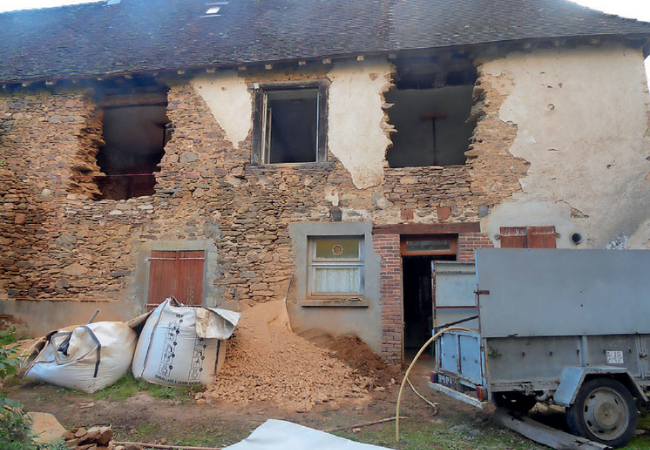
That afternoon, fortified by a glass of good red wine, I was instructed in the mysteries of ‘limousinerie’. This is the kind of wall that takes the stones as they come, instead of ‘dressing’ them to give a flush finish. You build one course at a time, starting with the outside, and then fill the inside.
That makes it sound easy. The difficulty – very unlike working with brick – is that you have to keep sighting and re-sighting to ensure that the wall is both straight and level. I was surprised how much the masons moved around – standing back, going down into the garden to look up at the work, and rambling around the room trying to find the right stone, too. They never stay in the same place long. The spirit level and the steel straightedge come out from time to time, but most things are done by sight. Old houses don’t come with straight lines and right angles, so you’re always trying to match the slight irregularities.
Learning to spot the right stone is also a skill you have to pick up in practice. Every stone has faces you can use, and faces you can’t use. For the outside, you’re looking for a flat face; you’re also looking for a stone of the same thickness as the others in that course, and long enough to fit a particular gap. You lay the mortar bed nice and thickly, and tap the stone with your mallet to fix it in place. But it doesn’t always work. I got one stone that I was convinced was the right one for the space, but it just wouldn’t fit properly. A big hand reached out from my left and flipped it over on to its other side.
“Tap it.” I gave it a tap with my mallet and – yes, it was the right stone; I had just put it in upside down.
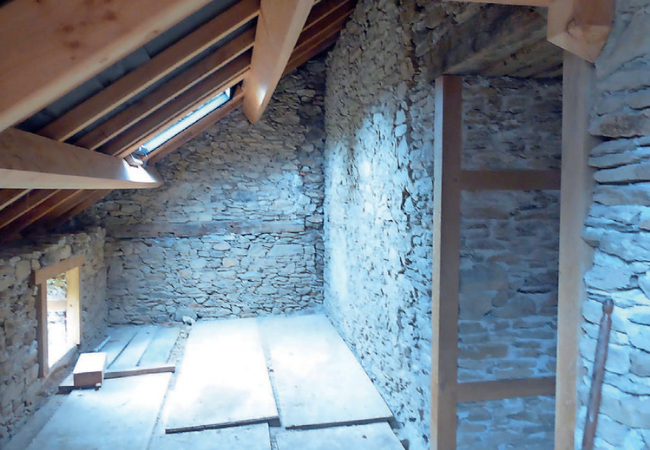
Gradually, I learned. One of the other masons told me: “You have to look without looking.” And Dominique said: “You have to see the space in your head. Then you find the stone that goes in that space.” Their advice was sometimes almost mystical, at other times 100% practical. The wall kept going up. I learned how to lay a ‘boutisse’ – a stone that points into the wall, sometimes going all the way from one side to the other, to help strengthen the bond. I learned always to cross stones over. I learned how you could build in a double-height stone to bind two courses together. I learned how to tap long stones back into the stonework each side to ensure that new and old work are tied together.
And gradually, I developed my instincts. “What about this one?” Dominique grinned. “You had to ask,” he said. “If you have to ask, it’s not right.”
Most of the stones used in limousinerie are quite small. Big ones are used sparingly, as ‘boutisses’, or at the corners of the house, to make the joint between the two walls strong, or as lintels and sills for doors and windows. But the masons called them all ‘cailloux’ (pebbles), even the one I couldn’t manage to lift. For smaller, and for inside openings, you don’t need big stones; it’s more common to make a frame in timber, and then lay the stones of the wall so they fit into the frame.
By the end of the day, we had finished that wall up to the window sill. And I’d realised how much I enjoyed working as a mason.
Looking for more articles like this?
Every issue of French Property News delivers in-depth regional buying guides, sound and trusted advice from leading experts, inspirational real life stories, renovation tales and lots of properties on the market to browse, including individual spotlights.
Share to: Facebook Twitter LinkedIn Email
More in renovation, stonemasonry
Leave a reply
Your email address will not be published. Required fields are marked *



